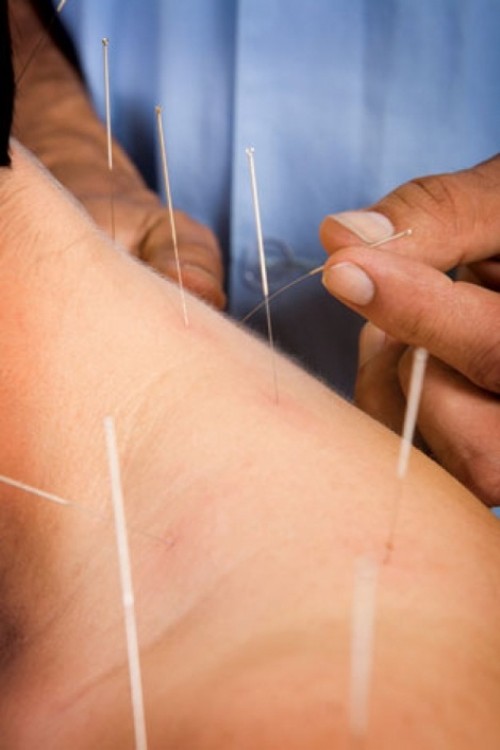In recent months, however, community acupuncture clinics have made it possible for her to resume treatment without the expensive bills because. In these clinics, between 10 and 50 patients are seen simultaneously.
The community-based approach was brought to the States in 2002 by the Working Class Acupuncture, based in Portland, Ore., which founded the Community Acupuncture Network in 2006. The goal is affordability and accessibility, charging fees on a sliding scale, from $15-$40 per treatment.
Currently, there are seven community clinics in Utah. Mark Montgomery’s St. George Community Healing Arts was the first, opening in 2008. SLC Qi, where Tsuchiya receives care, opened in May. The
During an acupuncture treatment, solid filaform needles are inserted—generally, a half-inch deep—into specific points along meridian lines to balance the body’s energy, free blocked energy and help vital organs. The 14 main (and billions of smaller) meridians are the connecting pathways throughout the body, serving to nourish all tissues with qi (energy) and blood. In community clinics, they’re accessed from the knees and elbows down, says SLC Qi co-owner Dean Woolstenhulme.
Woolstenhulme began school in San Francisco in 2006, graduating in December 2009 without ever having heard about community clinics. Upon his return to Utah, a private practice job fell through, but Brent Ottley, who owns Qi Works, taught him about the community approach. Woolstenhulme was sold, acquired necessary licenses and opened shop. “This is my version of health-care reform,” he laughs, adding that lowering costs cuts out insurance companies. “There’s something synergistic happening when a group of people all have the intent of healing—everyone’s energy similarly focused. Each individual gets more out of it.”
Acupuncture might sound New Age-y and difficult to comprehend from a Western perspective, but Woolstenhulme says it has benefits that would surprise people. Acupuncturists treat various ailments, including but not limited to addiction withdrawals, anxiety, digestive problems, chronic fatigue and high-blood pressure.
Ottley adds that this doesn’t replace Western medicine. “People ask, ‘Which is better?’ It’s a silly question, like saying, ‘What’s better, breathing in or out?’ ”
As for privacy, the community clinics do not require a communal treatment. All of the clinics have separate rooms for talking privately, if desired, and offer private sessions. Ottley says the risks are minimal. “Anytime you use something sharp and stick it in someone, you have the possibility to create harm. Aside from rare, minor bruising or a few drops of blood, it’s a very safe practice,” says Ottley, who can’t recall any serious national incidents from licensed acupuncturists.
Also, Ottley will refer certain cases to private practitioners like Harmony Acupuncture Clinic’s Bea Hammond, who, while excited about the movement, maintains individual treatment. “I like the privacy ... with long intakes and long check-ins when patients return. They can really open up emotionally or, if needed, take their clothes off to access specific spots you wouldn’t communally.”
Clinics acquire licensing from the State of Utah Division of Occupational and Professional Licensing via training and testing. During treatment, appropriate protocols are followed, such as basic hygiene, sterilization and keeping ill patients out of communal rooms.
Ottley has been fundamental in helping establish other local clinics, and doesn’t worry about getting rich. “It’s not a competition. We’re not going to run out of sick people, there’s no shortage. We’re all a bunch of damn Commies,” says Ottley, tongue-in-cheek, “It’s a social-enterprise model. We try to sustain the practitioners so they can do more. If there’s extra capital, it’s used to solve that problem further, or look after another problem.”
Speaking of Articles, ,
-
Walk of Shame, The Lego Movie
New DVD/VOD Tuesday, June 17
- Jun 16, 2014
-
Drinking-Class Zero
Following a night of drinking, Wendy Simpson, 25, walked to a McDonald’s restaurant in West Yorkshire, England, where she was told that the counter was closed and only the drive-through was open but that she couldn’t be served
- Jun 16, 2014
-
How to Train Your Dragon 2
Dragon 2 shows DreamWorks is still willing to be daring
- Jun 13, 2014
- More »
More by Austen Diamond
-
Wasted Space
342 S. State, Salt Lake City
- May 6, 2015
-
Jackalope Lounge
372 S. State, Salt Lake City
- Apr 22, 2015
-
Geeks Who Drink at Piper Down Pub
1492 S. State, Salt Lake City
- Apr 15, 2015
- More »
Latest in News
Readers also liked…
-
Raise a glass for E.L.T Harrison, architect of the Beerhive building on Main
Small Lake City
- Oct 11, 2023




